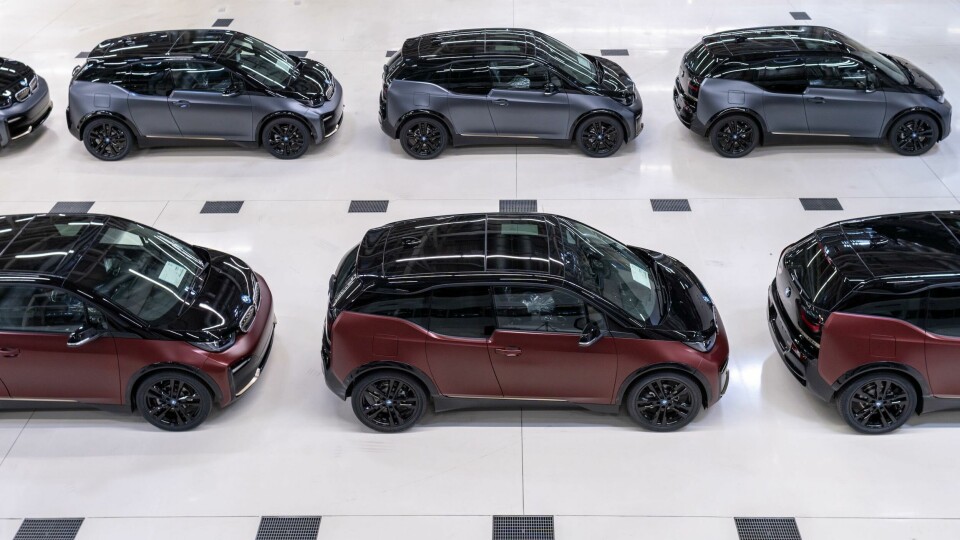
Design interviews: interrogating BMW’s top team
Car Design News quizzed BMW’s executives on the brand’s future (and its wheelchair)
While we were at the LA Show, we took the chance to have a series of face-to-face meetings with several BMW executives about the company’s current offerings and plans for the future.
Interestingly, the company brought a brand new line of performance plug-in hybrids to the Los Angeles Auto Show, and also one of the most advanced vehicles of the entire show – the BMW Paralympic Racing Wheelchair.
So here’s what their senior people told us about that and much else.

Rich Steinberg – Department Manager, Product Planning and Strategy, BMW North America
Our conversation with Rich Steinberg revolved around current product portfolio and forthcoming products. Naturally, Steinberg was cagey about the future offerings from BMW, but we discussed some trends that could predict the future for the marque.
Trending along with the rest of the automotive industry, there is a movement from sedans to SUV/Crossovers. The X-1 model is doing well, and the X-7, a premium SUV, is coming. The ‘M’ line of performance cars is also doing well.
Asked if the proliferation of models and sub-models would continue, or if there would be some streamlining of BMW’s offerings in the future, Steinberg answered that as market conditions changed, new models would be added, and other models would be phased out.
We were particularly interested in the future of BMW’s ‘i’ sub-brand, and in particular the future of the i3, the megacity commuter car that is also the centerpiece of BMW’s ReachNow (DriveNow in Europe) car sharing program. We asked if the next generation of the i3 would continue or even enhance the urban commuter characteristics of the car. Steinberg replied that the ‘megacity’/commuter emphasis was too narrowly focused, and that the brief for the next i3 would probably be altered, although just how he would not disclose.
“The ‘megacity’ concept was the starting point for the i3, not the standing point,” said Steinberg. Asked if he anticipated more models in the “i” range, he stated that a small SUV-like vehicle would be next – something similar to an X-3 or X-5. We finally asked if the ‘i’ range might be folded into the overall product line. Steinberg replied, that like the ‘M’ line, the ‘i’ line would remain its own separate sub-brand.

Thanks to greencarreports.com
Rob Healey – Manager, Electric Vehicle Infrastructure, BMW North America
Rob Healey told us about a number of programs that BMW either has in place or is developing to create a charging infrastructure for its electric and plug-in hybrid vehicles. Currently in 25 US markets, mostly on the East and West coasts, BMW in conjunction with Volkswagen and other automakers and suppliers are working towards a robust ecosystem of chargers to bring about a greater adoption of electric vehicles, just as the public is turning to electrics as the car of the future.
We asked if a standard charger is emerging as the industry standard, and Healy replied that the CCS (Combine Charging System) compliant chargers are rapidly becoming the new standard, already adopted by Volkswagen, General Motors, Ford, FCA, and others (but not Tesla).
We also asked if inductive charging, so often presented in utopian visions of streets of the future was part of BMW’s plans. Healy replied that currently inductive charging is too expensive and too inefficient to be useful at its present level of development.

Oliver Heilmer – President, BMW Designworks
We asked Oliver Heilmer about the current state of Designworks and the kinds of projects they were doing, and in particular if there any trends emerging in the sort of projects for which they were being commissioned. Heilmer replied that the mix of projects has remained roughly the same in the last few years, although they are seeing more UI/UX projects and Service Design commissions. There remain a number of clients for various transportation projects, and clients of long standing such as John Deere. Heilmer added that 50% of the work is designing for BMW itself.
He added that each studio has its own particular strengths, which allows a productive worldwide collaboration between Designworks’ three studios. The China studio does Chinese-oriented work, the Munich studio does more BMW R&D and the USA studio near Los Angeles does more advanced work, although these are generalizations; the project distribution can vary. Heilmer added that Designworks as a whole works as a sort of ‘Forward Scout’ for BMW, its varied design projects generating a wealth of design information that can inform the design of cars within BMW itself.

Brad Cracchiola – Associate Director, BMW Designworks
Brad Cracchiola was on hand at the show to speak about BMW’s award- and medal-winning Paralympic Racing Wheelchair. Aerodynamics and ergonomics were of paramount importance in the design process for these wheelchairs. Athletes were scanned in their existing chairs and a new chair was fashioned as a custom fit, in a process which Cracchiola calls “bespoke ergonomics”. Computational fluid dynamics was used in the analysis of wheelchair movement including the aerodynamics of racing. Carbon fibre was used in the construction of the chair and a complete redesign of the chassis was accomplished as part of the design process.
When we asked Cracchiola if the wheel chair experiment might preview the design of a future car, he chuckled and said that while unlikely, some of the processes such as bespoke ergonomics and, surprisingly, 3-D printing might well inform the design and manufacture of BMWs of the future. Cracchiola noted that the team was pleasantly surprised with the advancements in 3D printing over the last couple of years, and that these technologies, now far beyond the hobbyist stage, bear close observation in the future.



